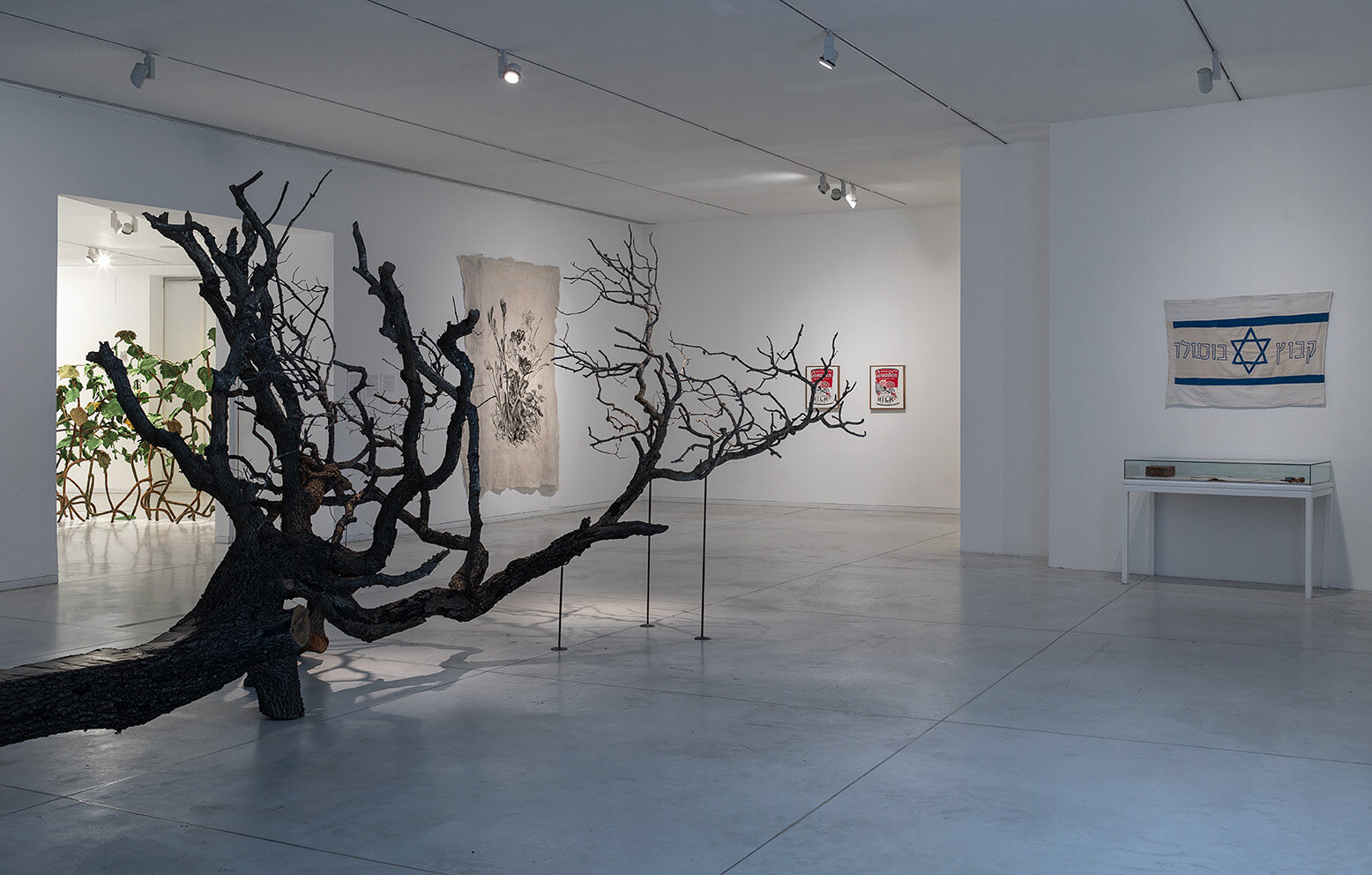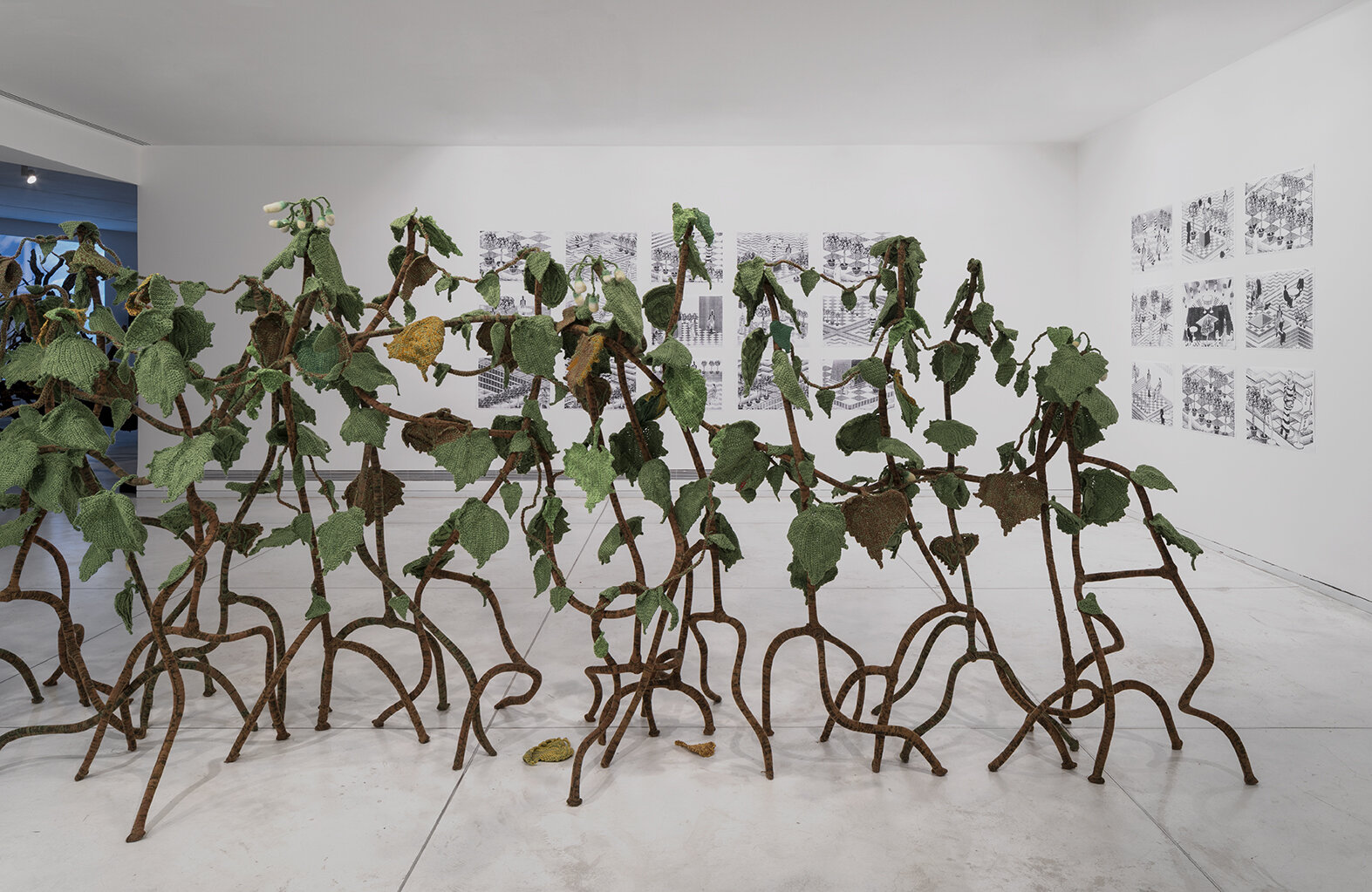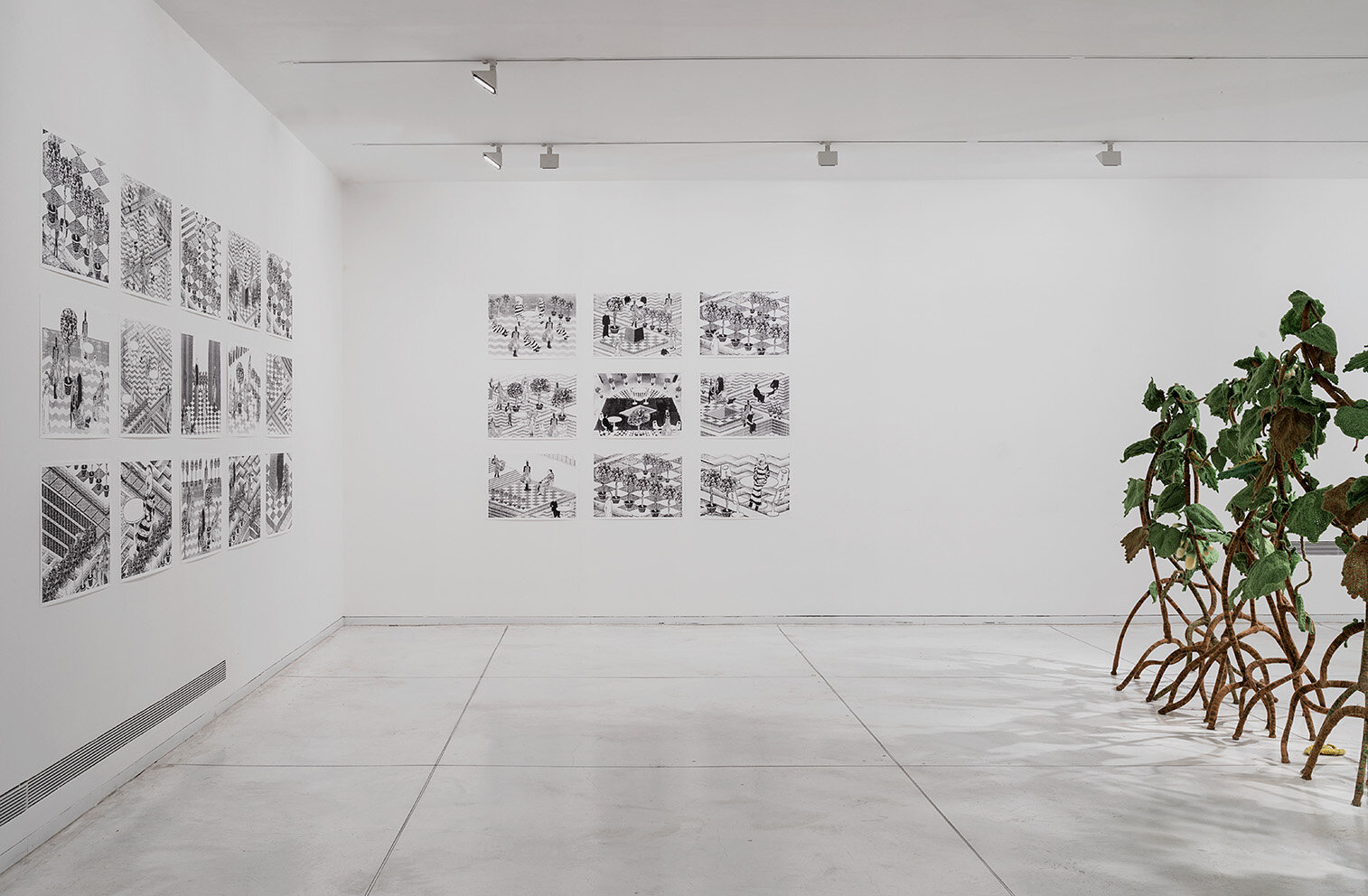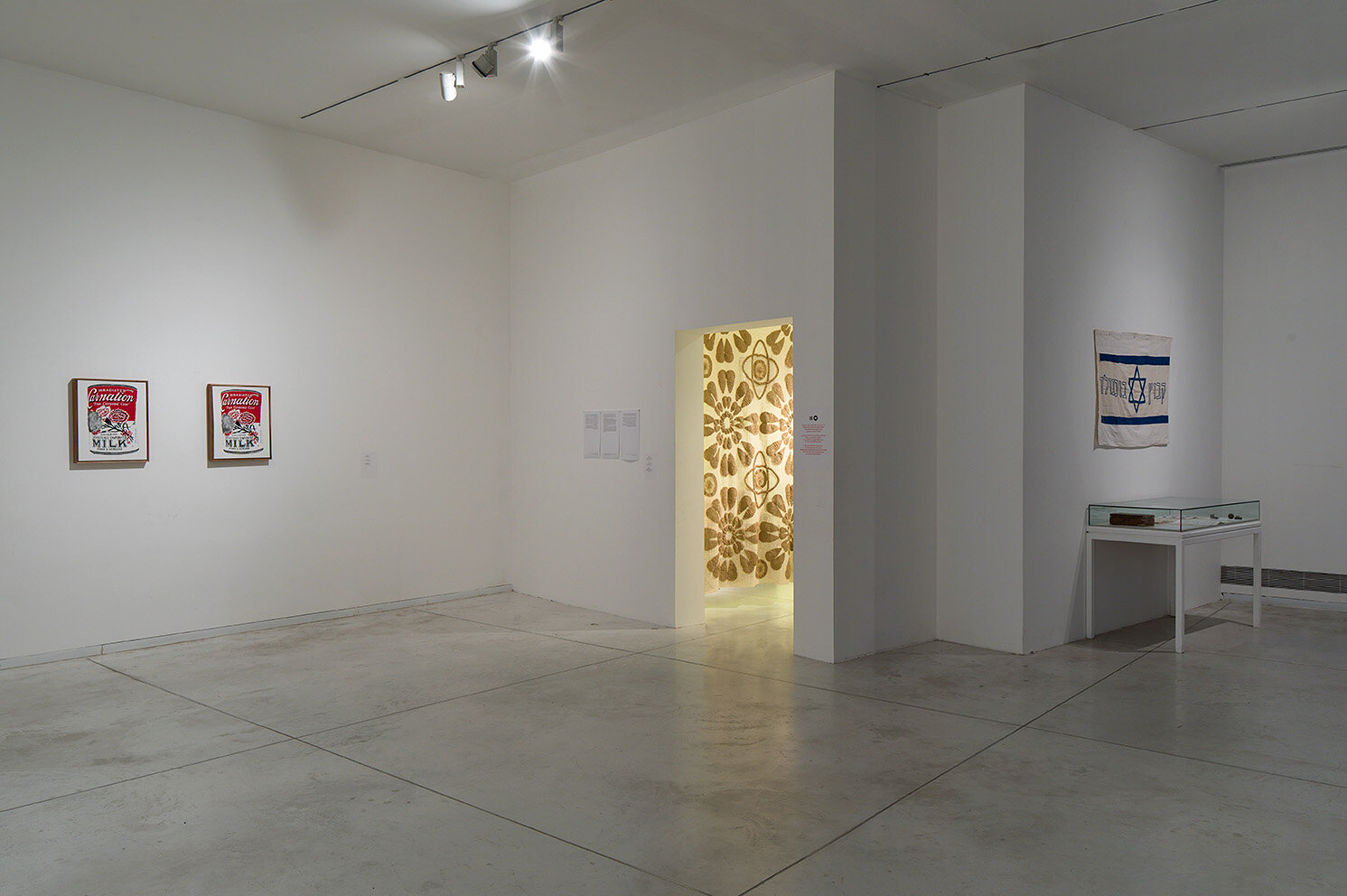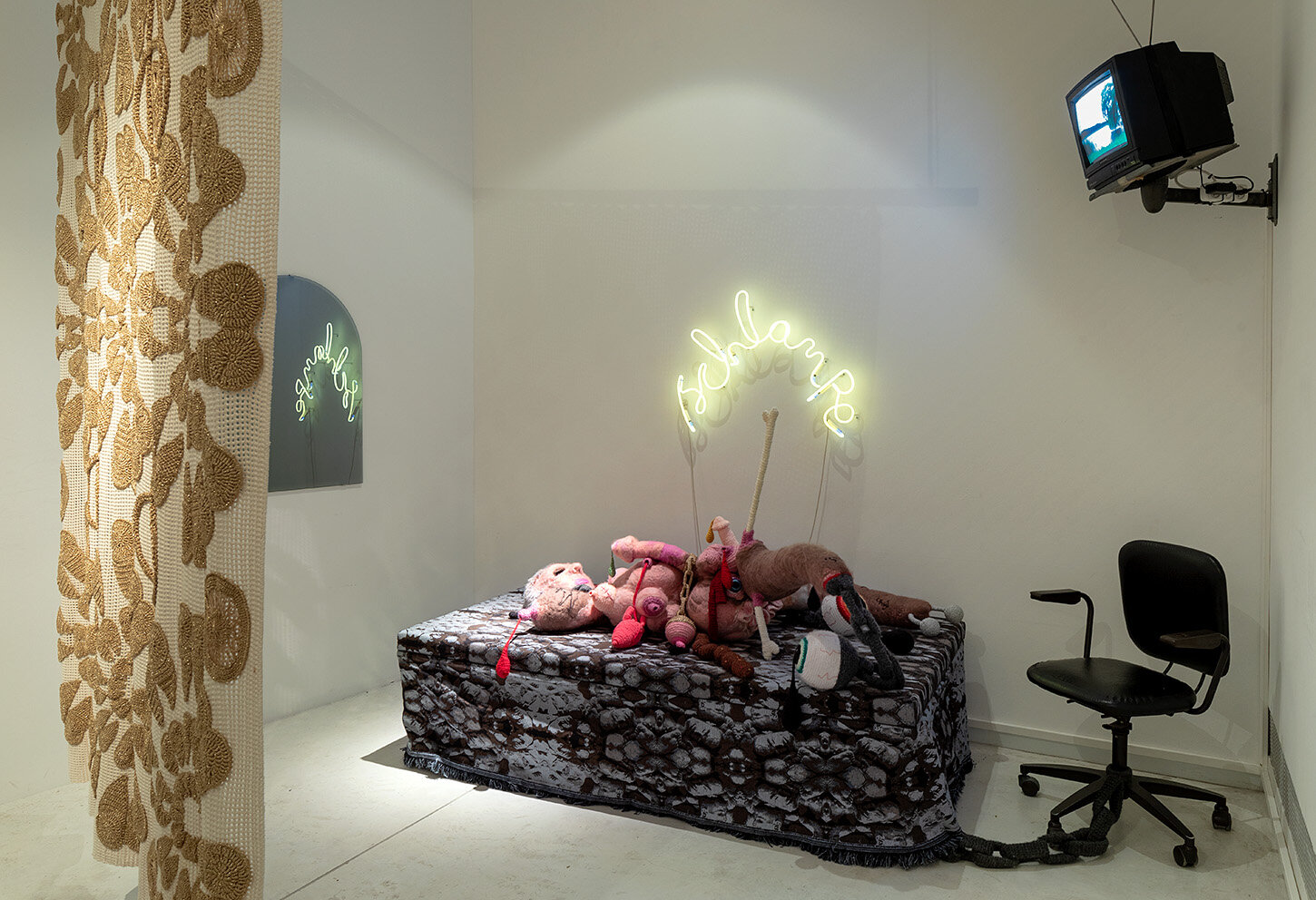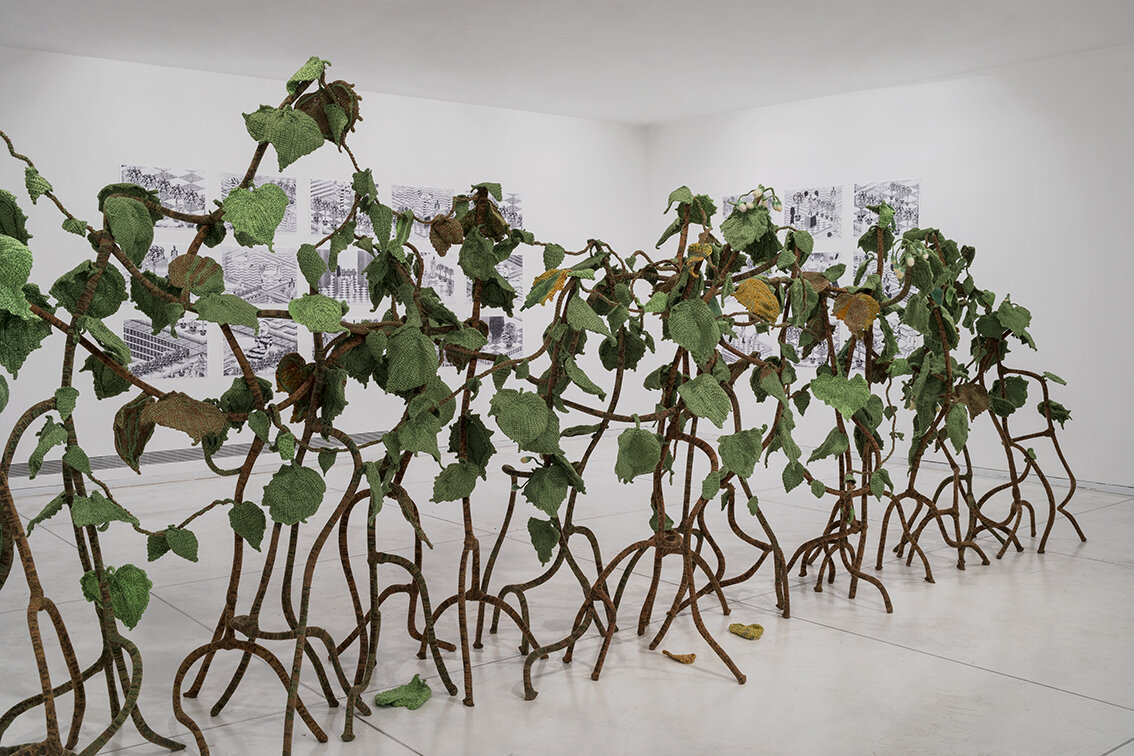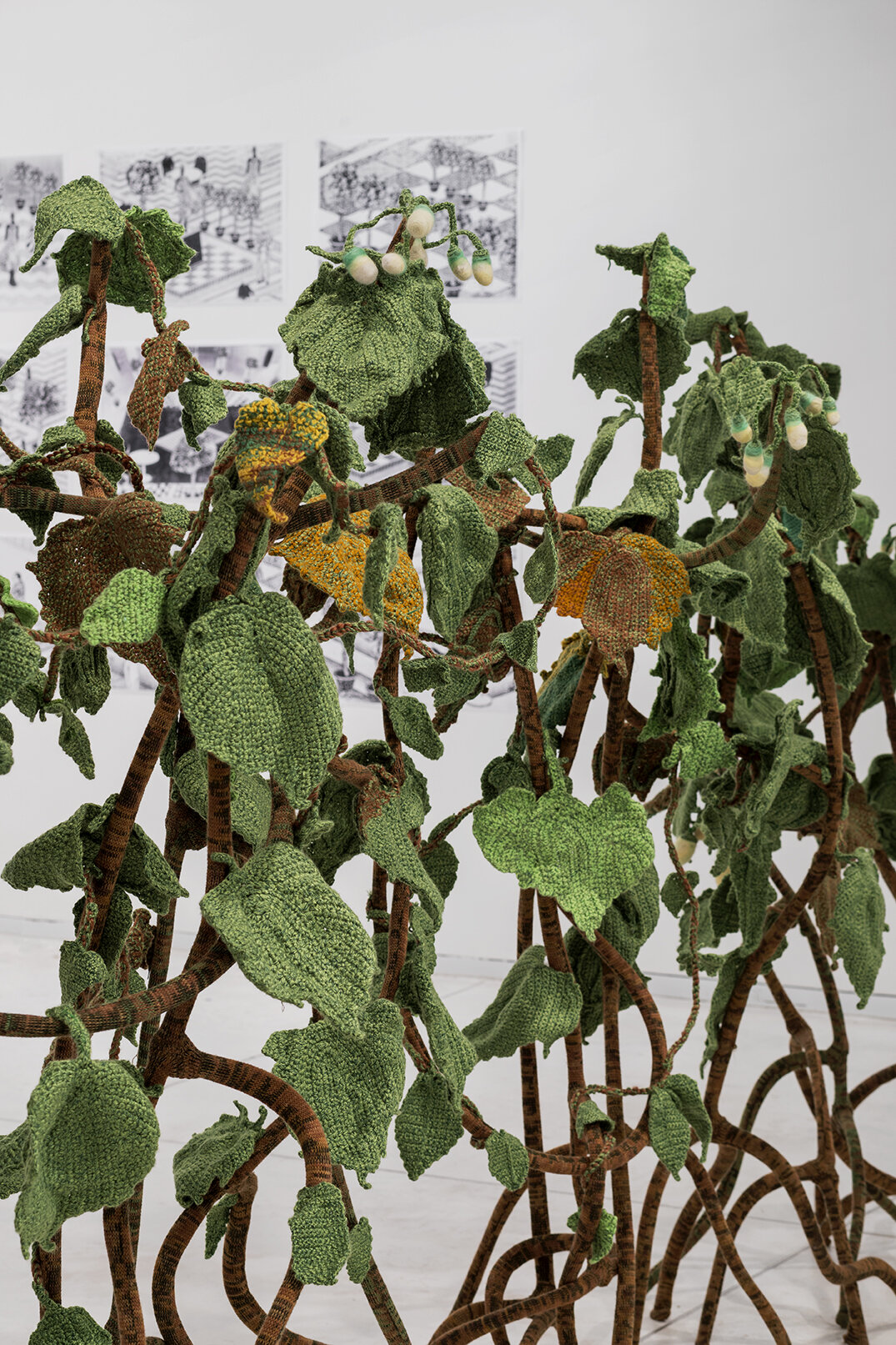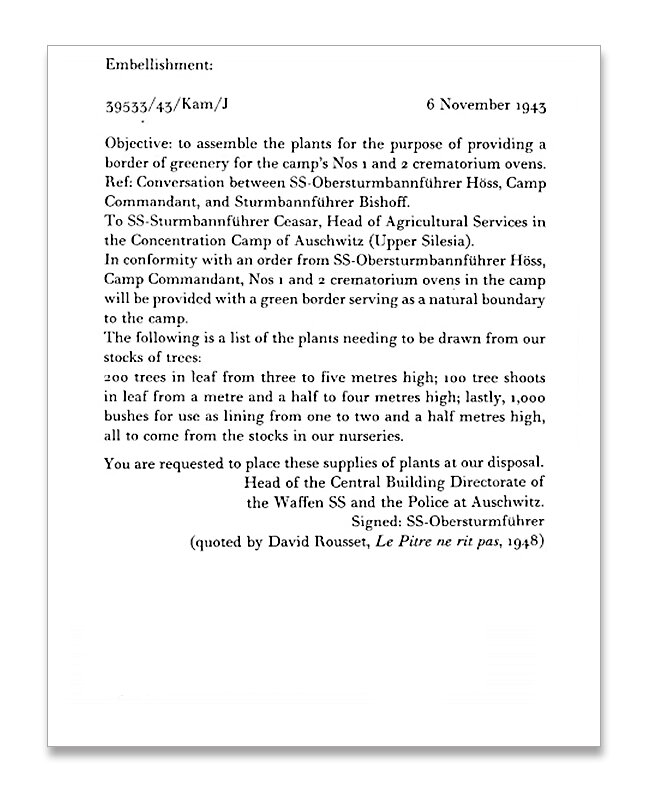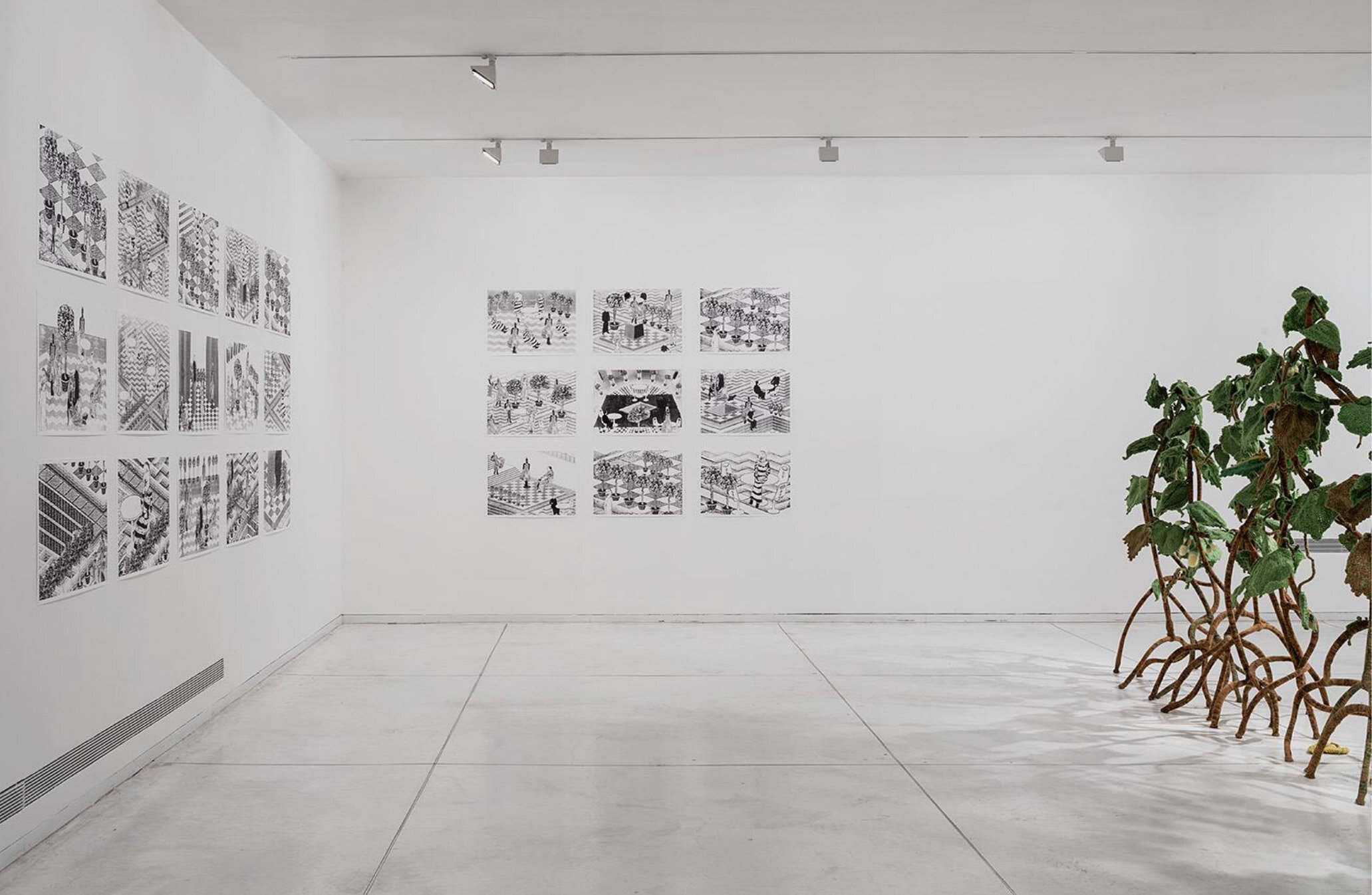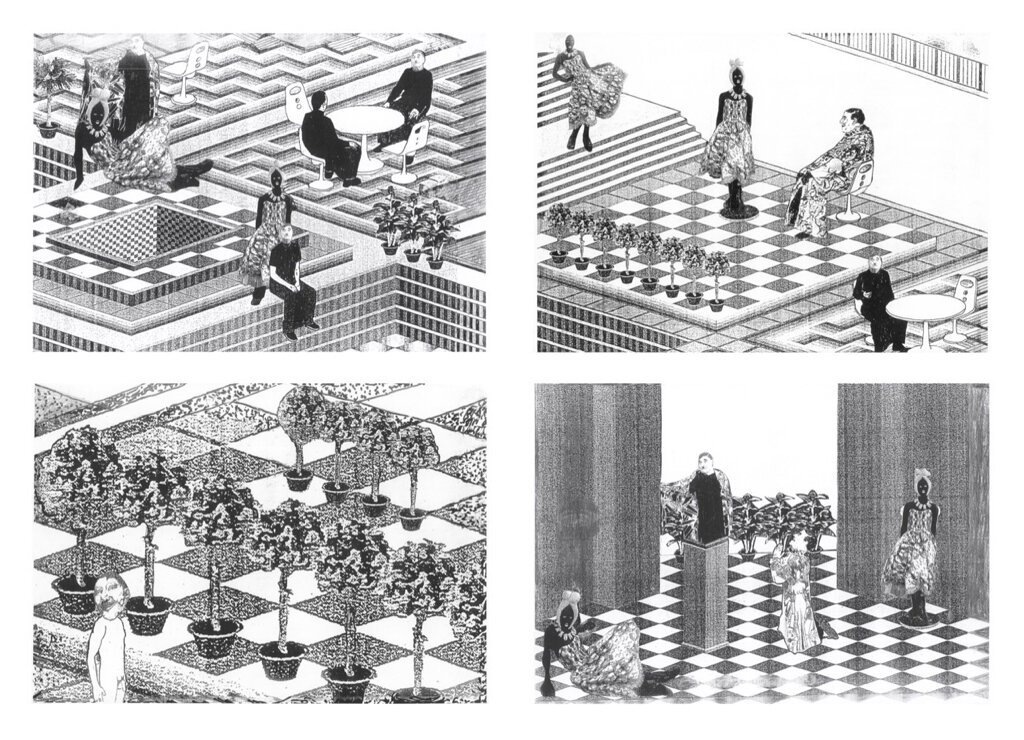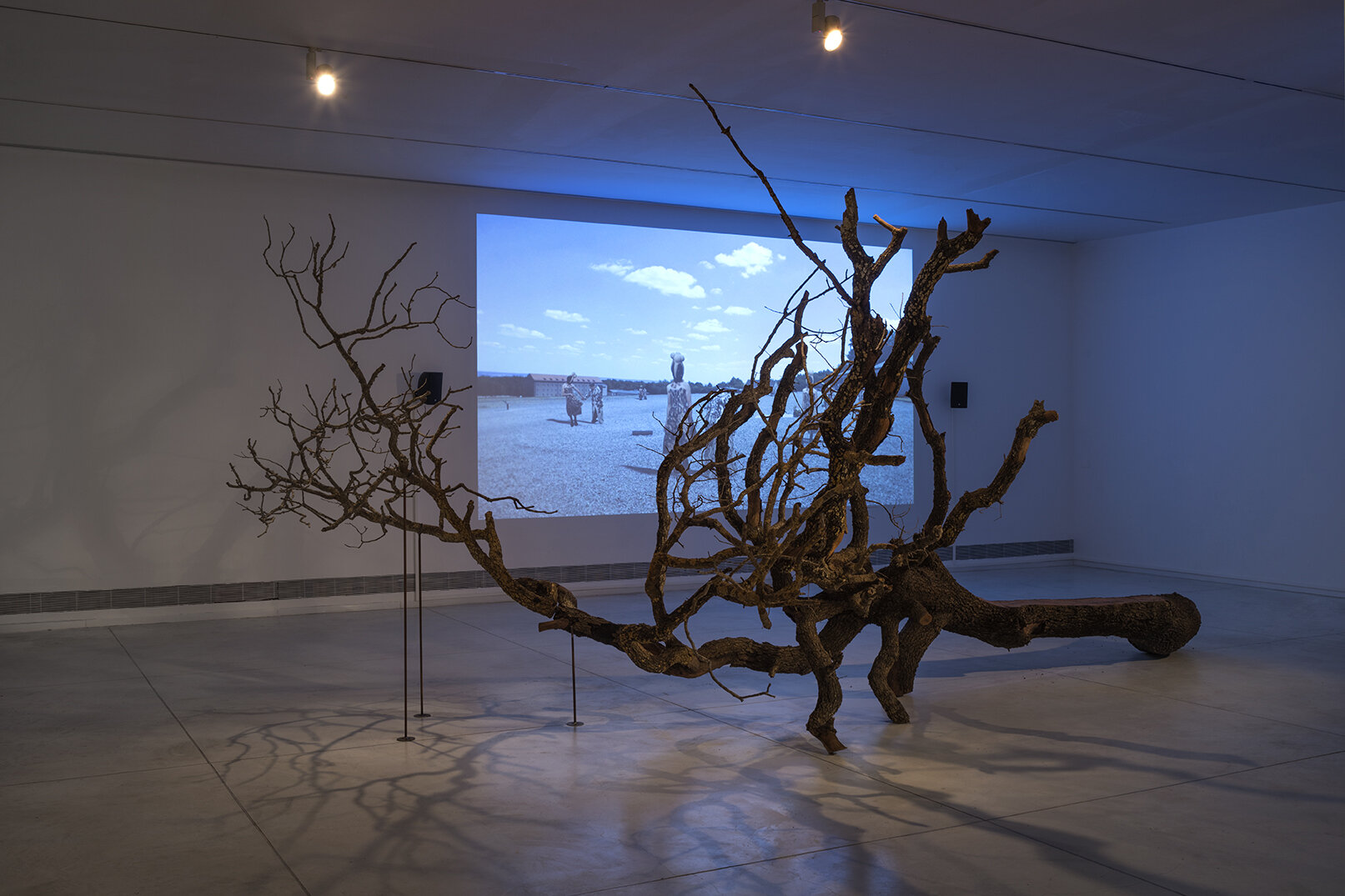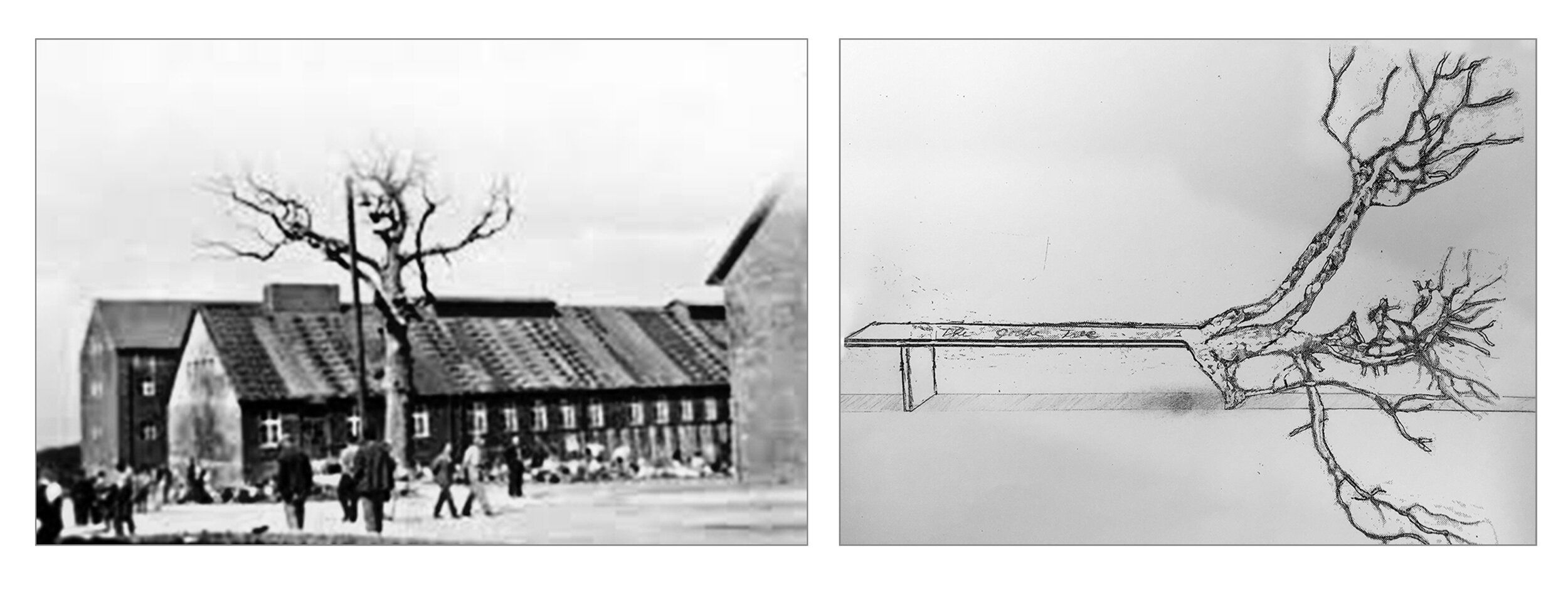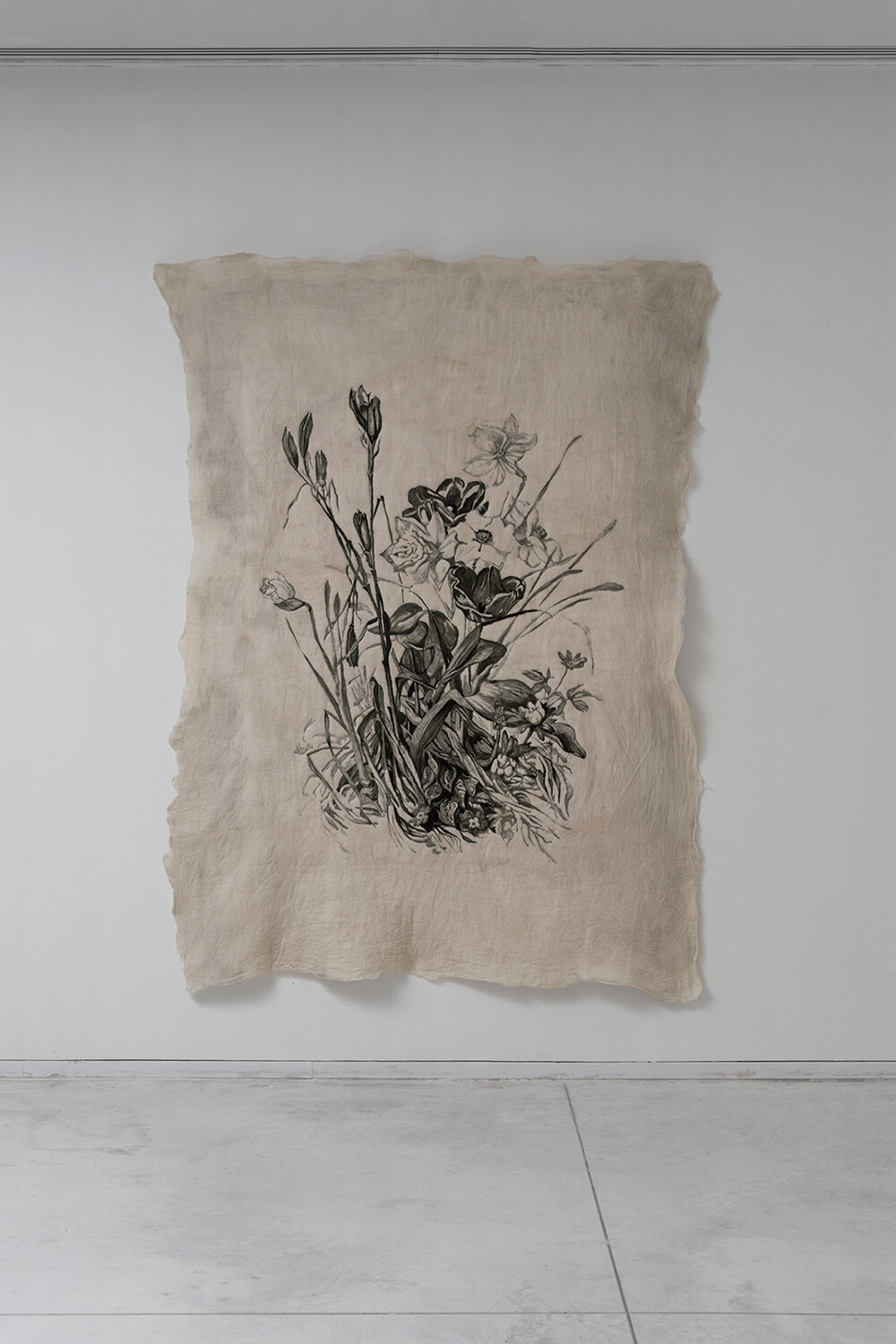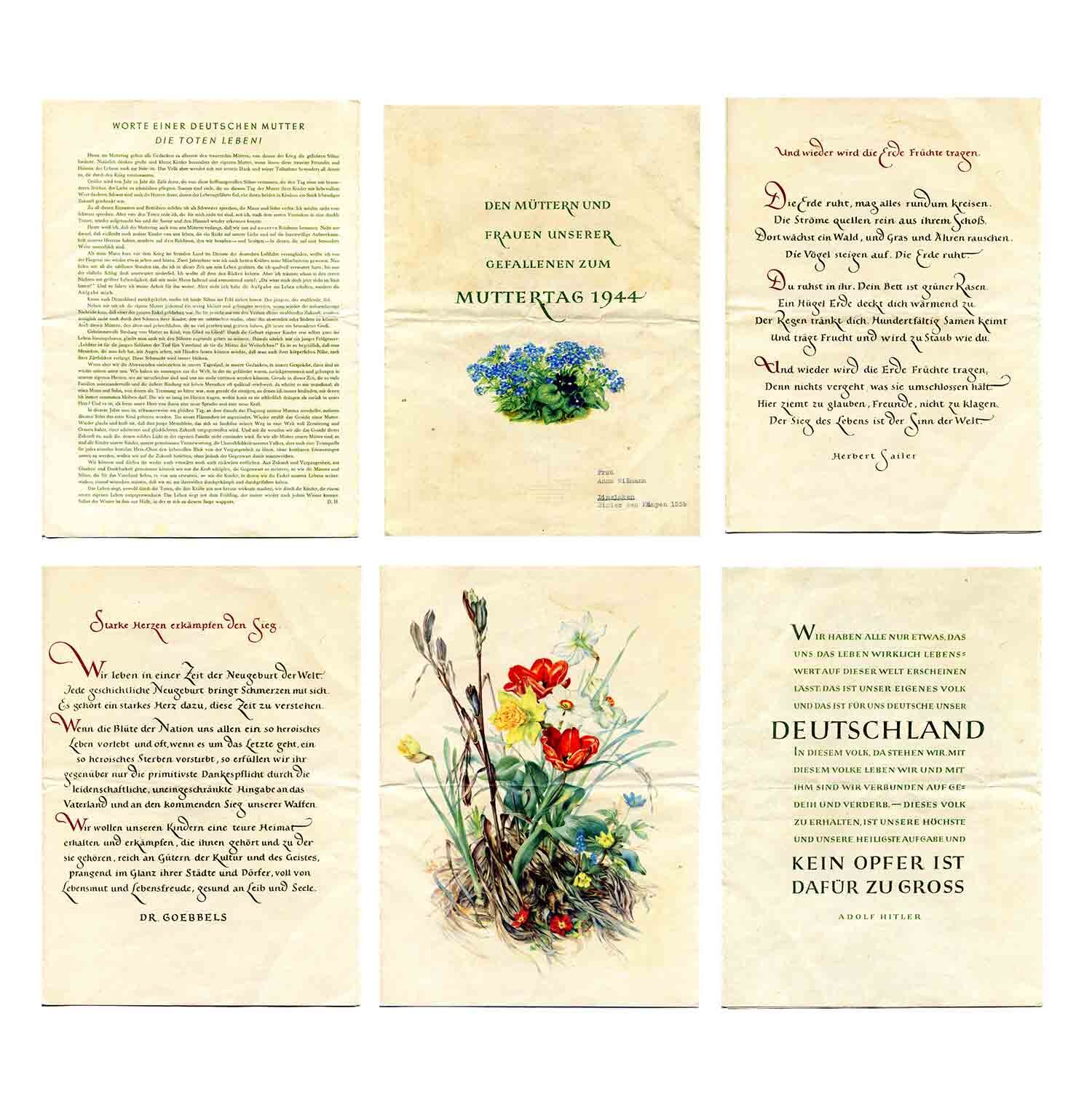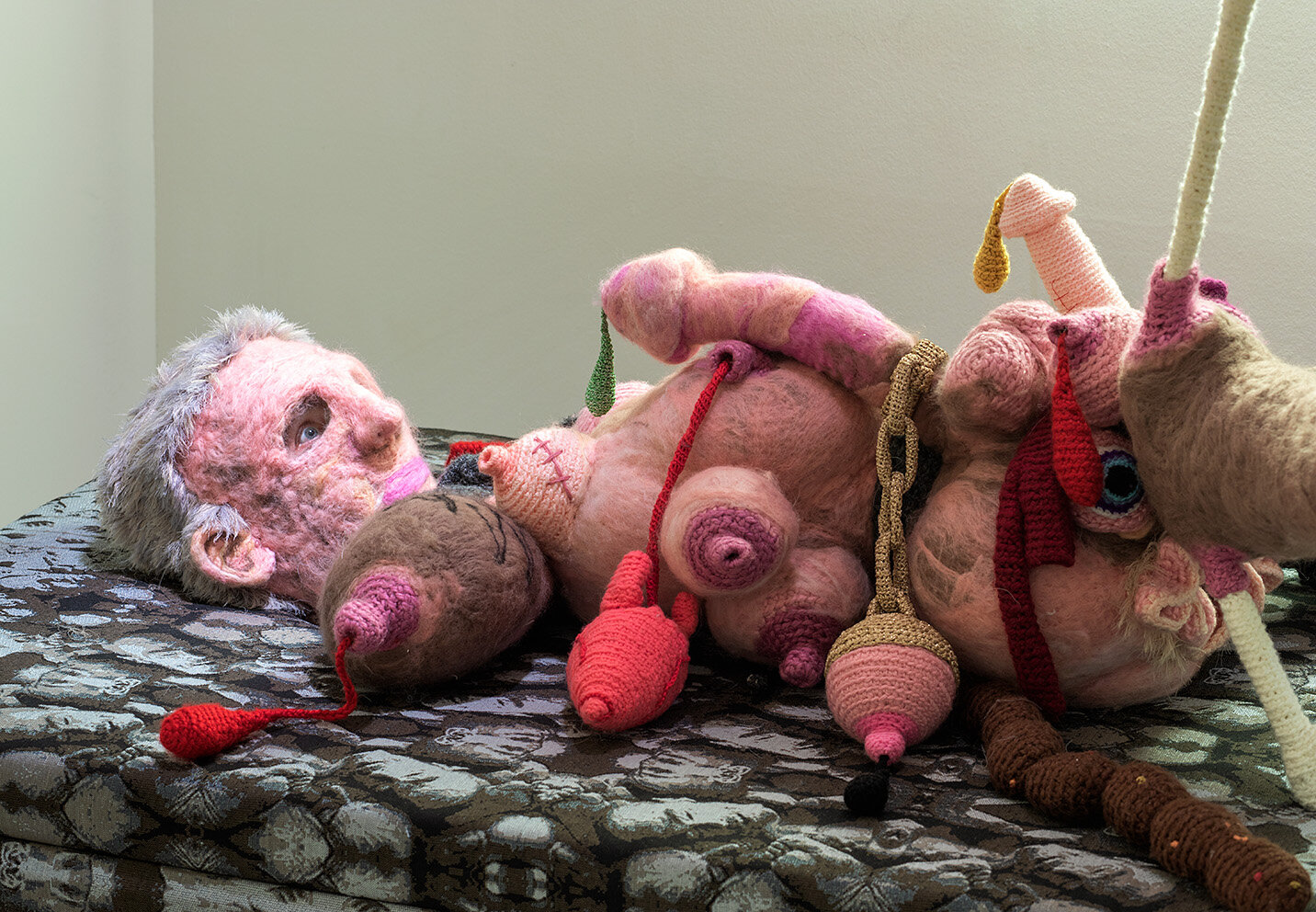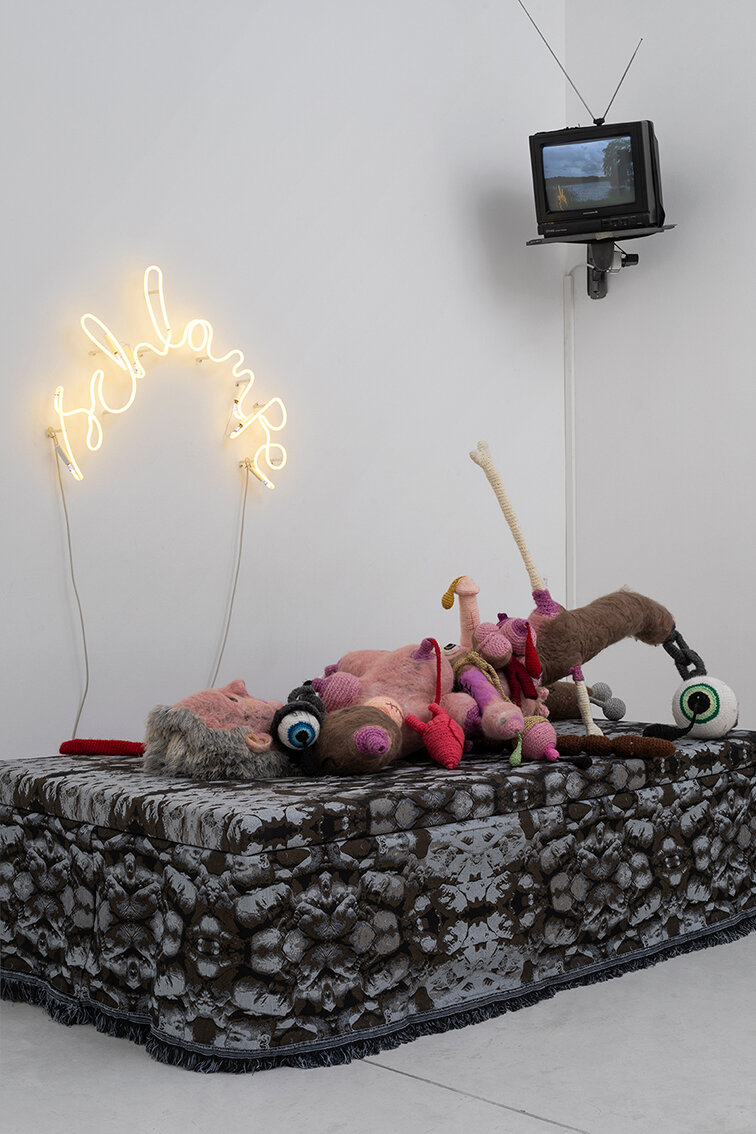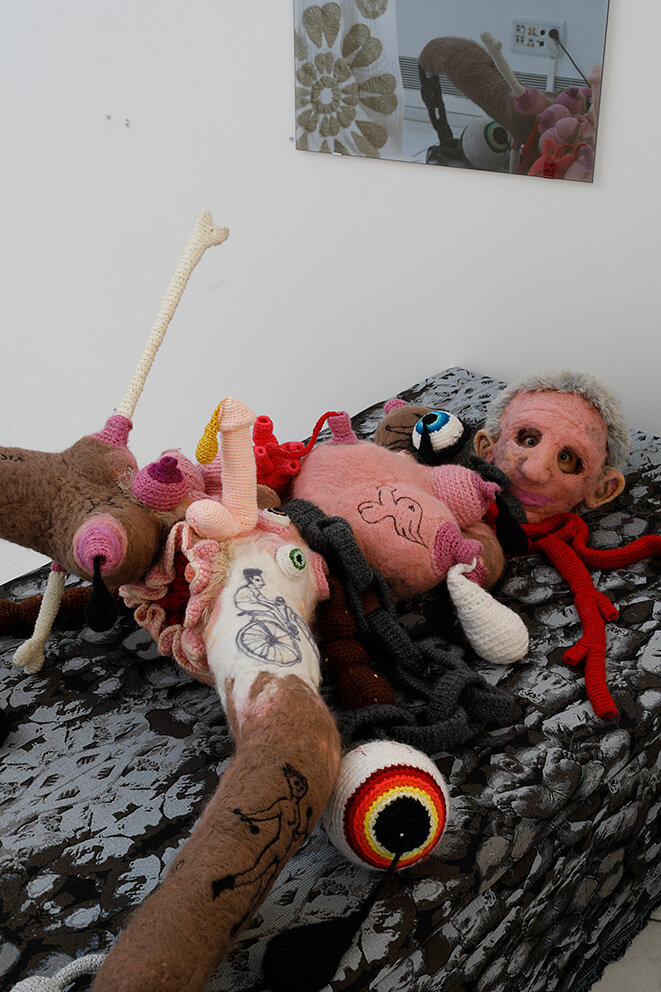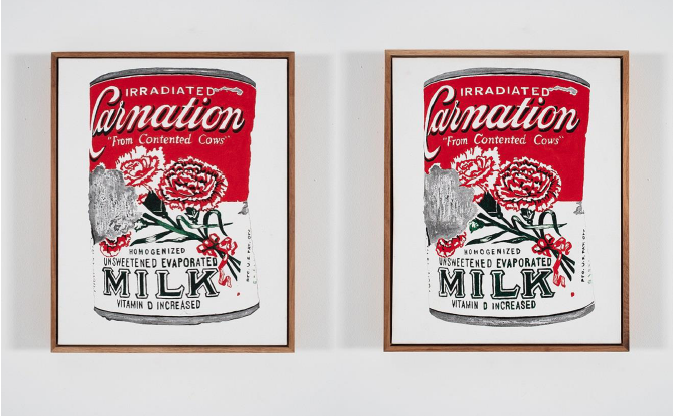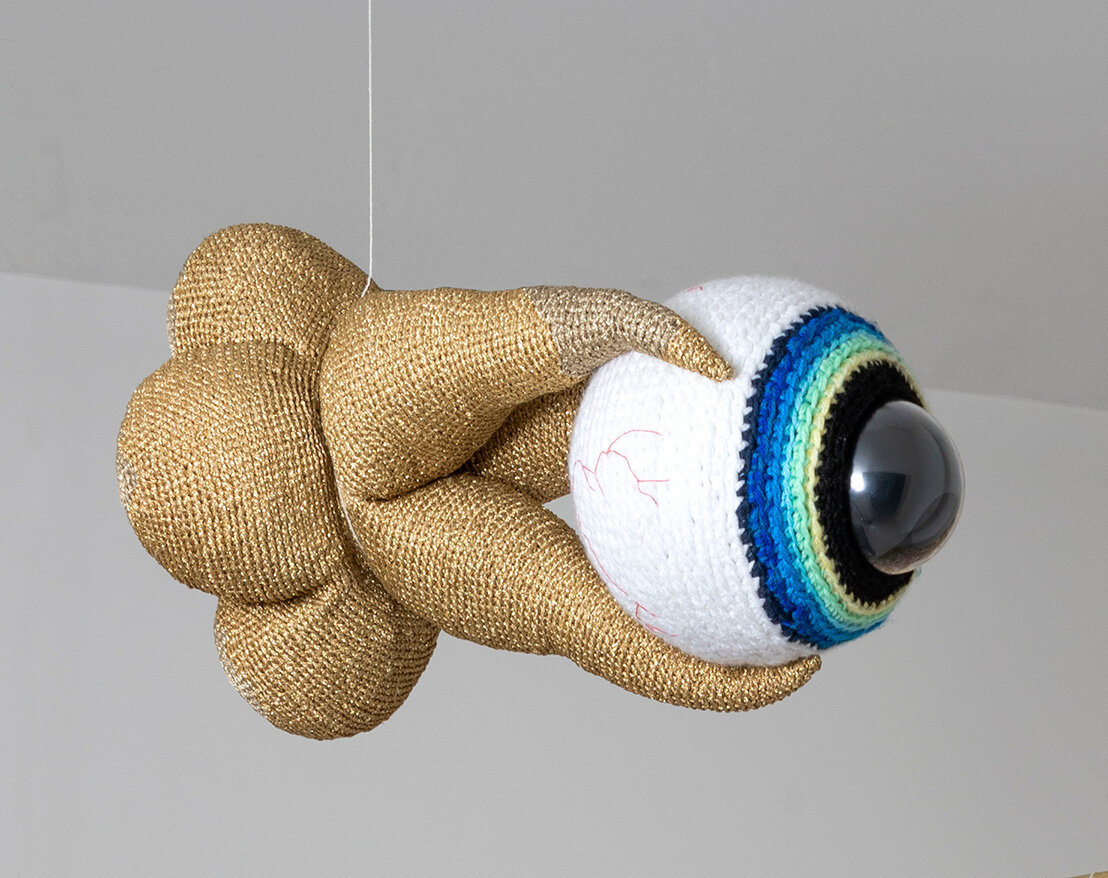Gil Yefman: Kibbutz Buchenwald, Tel Aviv Museum of Art
Recipient of the 2017 Rappaport Prize for a Young Israeli Artist
Dates: 26 December 2018 – 31 August 2019
Curator: Adi Dahan
The exhibition is accompanied by a catalogue
photos: Elad Sarig
Gil Yefman’s solo exhibition presents a new project that develops his collaborations of recent years with the artist Dov Or-Ner and the Kuchinate Collective. The exhibition revisits a short historical event from the end of World War II and the early years following the establishment of the country. It considers the rift that opened between “Holocaust” and “revival,” evokes collective traumas and offers ways of unison. Through the motif of cultivated nature emerges an imagined, fantastic, queer and mystic site – that is, kibbutz Buchenwald.
The video installation Bad Renro and Penelope at Kibbutz Buchenwald stands at the center of the exhibition. The film follows two characters: Penelope embodied by Gil Yefman, and Bad Renro embodied by Dov Or-Ner. The work’s title relates to a short historical event in which a group of survivors from Buchenwald concentration camp sought to implement a communal ideology and realise a productive and collective future from within the anarchy that was the end of World War II. The survivors chose a name that indicated the place they met and formed as a group – kibbutz Buchenwald. Yet when they arrived in the country to carry out their shared vision, the kibbutz movement had difficulty accepting such an anomalous phrase. The name evolved and survived for four years before its current name was decided – kibbutz Netzer Sereni. The original name, loaded with a rare possibility of remembrance, slipped away from the historical canon.
Despite its ties to the past, Bad Renro and Penelope’s kibbutz Buchenwald is a contemporary, not historical, site. The video is shot in the places as they are today: kibbutz Netzer Sereni with its lawns and paths, the historical buildings that are used as venues for conferences and events, and the Holocaust memorial monument made by the Zionist sculptor Batya Lishanski. So too Buchenwald concentration camp, which today functions as an active memorial site, with opening hours and a website, a visitor center offering guided tours, youth hostel, museum, shop and café. Zionism and Holocaust remain explosive subjects of fervent preoccupation that still shapes local identity, defines morals and tradition, ranges between delicate familial feelings and the politics of public sentiment.
The exhibition narratives intertwine through the motif of cultivated nature. Thus, the installation Hedgerow, based on a 1943 letter in which the commandant of Auschwitz extermination camp ordered the director of the SS agricultural branch to obtain bushes, shrubs and trees that would serve as natural camouflage to hide the crematoriums. The installation simulates a live wall that acts as an architectural screen in the exhibition space. The piece was made by Yefman and the women of Kuchinate collective who held public knitting circles at Tel Aviv museum of Art. 265 volunteers who answered an open call took part in crocheting woollen leaves into a knitted hedgerow. The mute nature allows Yefman to transform the building blocks of Israeli society, to pick at the wounds of memory, to gaze at them with eyes wide open and to plant new seeds in them.
The exhibition was made possible thanks to the Bruce and Ruth Rappaport foundation, the Ostrovsky Family fund, the Lauren and Mitchell Presser fund, and the Malka fund, New York.
Hedgerow, knitted installation (wool, Acrilan, felt, wire, embroidery thread, gas pipes), 250x150x750cm, 2018
Based on a 1943 letter in which the commandant of Auschwitz extermination camp ordered the director of the SS agricultural branch to obtain bushes, shrubs and trees that would serve as natural camouflage to hide the crematoriums. The installation simulates a live wall that acts as an architectural screen in the exhibition space. The piece was made in collaboration with the Kuchinate collective who held public knitting circles at Tel Aviv museum of Art. 265 volunteers answered an open call and took part in crocheting woollen leaves into a knitted hedgerow.
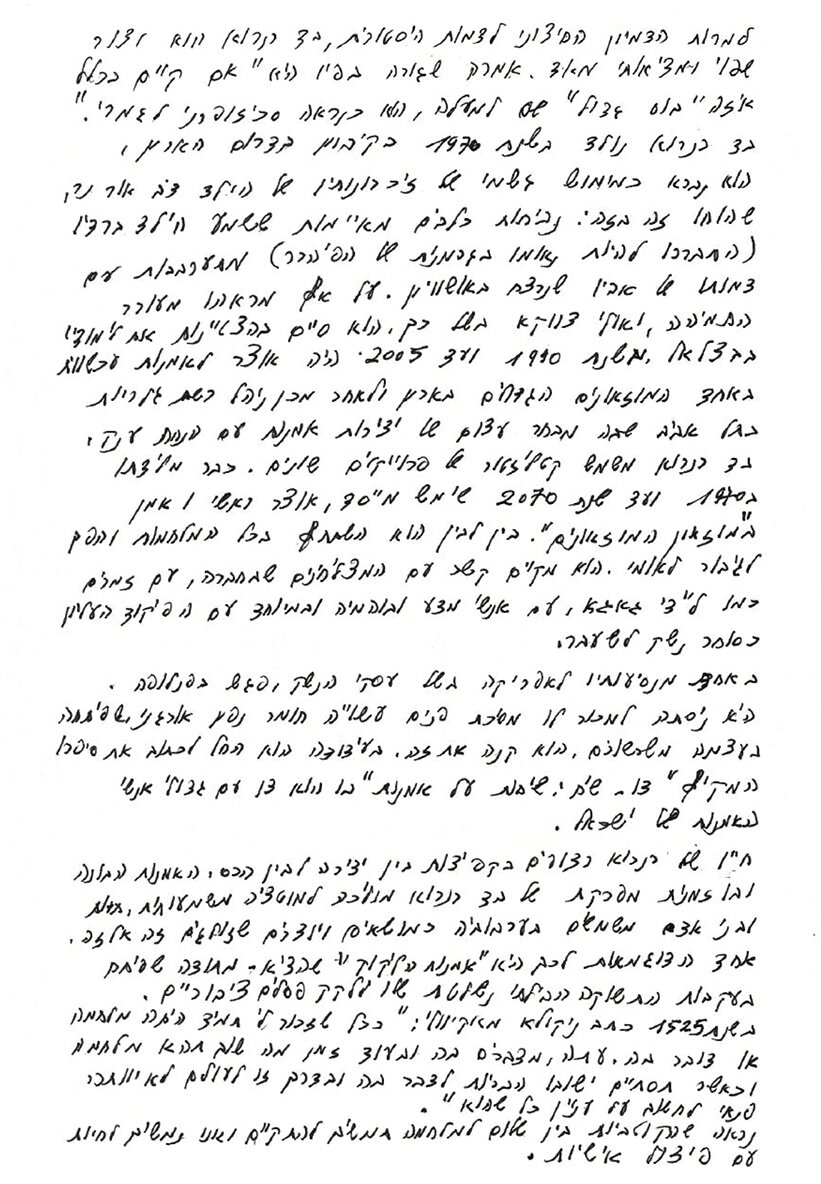
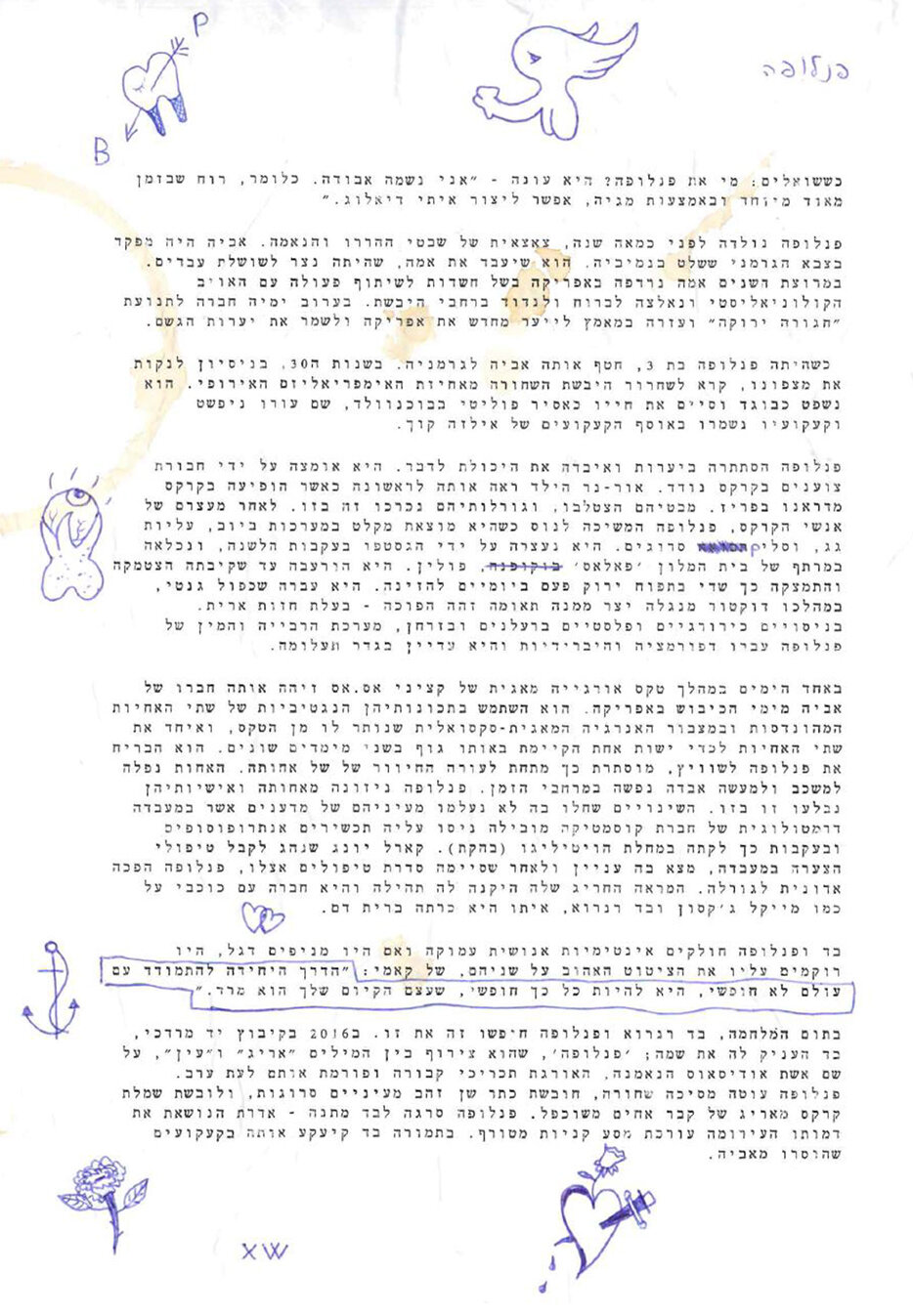
Bad Renro’s and Penelope’s respective biographies - for the english translation please scroll down.
Bad RenRo and Penelope at Kibbutz Buchenwald (trailer) 4K video 00:05:18, 2018
Please contact for the full version.
This film is structured as a collage of time and space, document and fiction. Scenes which are shot on the grounds of the Buchenwald memorial site and Netzer Sereni Kibbutz are mixed with a green screen studio footage retroactively placed onto each other. By using this approach, the gap between memory and history is further examined, bringing about a higher level of critical view both ethically and aesthetically. In collaboration with Dov Or-Ner.
Goethe Oak Bench, Oak tree, 300x250x750cm
A collaborative installation with the artist Dov Or-Ner. The famous Goethe Oak under which the poet sat and wrote parts of Faust and many poems (the Gingko Biloba is one of them), grew on the grounds of the Buchenwald Concentration camp. It was a symbol of humanism for the prisoners who new of Goethe, and they were proud it was growing in their living quarter. The tree was bombed during the liberation of the camp. In the film, Bad plants a Gingko Biloba seed within the stump. The visitors are welcome to sit on an Israeli Oak, shaped as a bench, taken from Kibbutz Allonym (Oak trees in Hebrew.)
Special Thanks to the artist and carpenter Raz Chugim.
”El Maleh Rehamim” (God Full of Wombs) 2018, Felting, 190x240cm
A collaboration with Kuchinate. The felt sheet was prepared using an Anthroposophical method, on which I later felted the image. The flowers refer to a Mother’s Day condolence greeting card which was sent by the Nazi propaganda office to grieving mothers and wives who had lost their beloveds in the battlefield. In the original document the flowers appear in full color along with words by Hitler, Goebbels and other leaders.
Field Slave, human size knitted and felted doll, Neon lamp, monitor, black one sided mirror, Jacquard fabric, bed, security camera, 2018
Additional performances.
This installation draws its reference from copulation cells in brothels which Himler established as incentive bonus system for workers and guards in concentration and death camps. For the women, it was a double punishment - once for their crime, and another for their womanhood. Most of them were political prisoners from Ravensbruck concentration camp. The video loops the landscape outside of the camp. The bed is made of the ”Human Tapestry” textile.
Bad Renro Biography:
Not withstanding the outward resemblance to a historical character, Bad Renro is a very sane and realistic creature. A common phrase of his goes “If there in fact exists some Big Boss up there, he must be completely schizophrenic.” Born in 1970 in a kibbutz in the south of Israel, Bad Renro was created as the embodiment of the childhood memories of Dov Or-Ner. Memories that were hurled at each other: terrifying dogs barking heard as a child over the radio (which turned out to be the Führer’s rally speeches) thrust against the figure of his father who was murdered in Auschwitz. Despite his strange appearance, and perhaps due to it, Bad Renro graduated with honours from Bezalel Academy of Arts. From 1990 to 2005 he was curator of contemporary art in one of the country’s leading museums and later managed a chain of Tel Aviv galleries that offered a huge selection of artworks at bargain prices.
Bad Renro is a catalyser of various projects. Already from his birth in 1970 and continuing until 2070 he serves as the founder, chief curator and artist of the Museum of Museums. All along he fought in all the wars and became a national hero. He has ties to society’s most illustrious members, with singers such as Lady Gaga, with scientists, bohemians and especially the top brass, thanks to his activities as a former arms dealer.
One of his arms dealing business trips to Africa occasioned his meeting Penelope, who tried to sell him a face mask made of organic explosive material she devised from tapeworms. He bought it. Encouraged by her he embarked on writing his comprehensive book Dialogue: Conversations on Art, in which he speaks with leading figures of the Israeli? art world.
Renro’s life is full of leaps between creation and destruction. His constructing and dismantling art leads to serious mutation. Animals and humans merge into objects and creatures that spill into one another. One example is his invented “art of licking” – a method he developed to deal with his uncontrollable desire to lick public sculptures.
In 1525 Niccolò Machiavelli wrote “As far as I remember there was always war or talk about war. Now, war, and what will again be war, is talked about again and when it will end the people will return and talk about it and in this way, no time will remain to think about anything else.” It seems that the polarity of peace and war will persist, and we will continue to live with split personalities.
Penelope Biography:
When asked who she is Penelope says – “I am a lost soul. A spirit that can be talked with only at very special times and through magic.”
Born 100 years ago, Penelope descends from the Herero and Namaqua tribes. Her father was an officer with the German army when Namibia was colonised. He enslaved her mother, who originated in a slave dynasty. In the course of time her mother was persecuted in Africa on suspicion of treason and forced to flee and wander throughout the continent. Late in life she joined the Green Belt movement and helped in attempts to reforest Africa and preserve its rain forests.
Penelope’s father kidnapped her to Germany aged three. In the 1930s, to clear his conscience, he called for the release of the black continent from the grip of European imperialism. He was tried for treason and ended his life as? a political prisoner in Buchenwald Concentration Camp, where his skin was stripped, and his tattoos preserved in Ilse Koch’s collection of tattoos.
Penelope hid in the woods and lost her ability to speak. She was adopted by a group of Gypsy travelling circus performers. The child Or-Ner first laid eyes on her when she performed in Paris with Cirque Medrano. Their gazes crossed, their fates intertwined. Following the arrest of the circus performers, Penelope escaped once again, finding refuge in sewers, attics, and knitted baskets. She was betrayed to the Gestapo, arrested and eventually imprisoned in the basement of the Palace Hotel in Zakopane, Poland. Starvation had made her stomach so small and shriveled that she could survive for two days on one green apple. A duplication performed by Joseph Mengele created her opposite identical twin – with Aryan features. Intrusive surgery and experiments with poisons and phosphorus deformed and hybridised Penelope’s reproductive and sexual organs and she is still considered a mystery.
During an orgiastic magic rite involving SS officers a friend of her father from the days of the African occupation recognised her. He used the negative characteristics of the two mutated sisters and the charge of magic-sexual energy retained in the rite to unite the two as an entity that exists in the same body in two different dimensions. He smuggled Penelope to Switzerland, concealed beneath her sister’s fair skin. The sister fell ill and in fact lost her soul in the expanses of time. Penelope fed off her sister and their personalities absorbed into each other. The changes she underwent were detected by scientists in the dermatological laboratory of a leading cosmetics company. They treated her with various anthroposophical solutions which led to her contracting the disease vitiligo. Carl Jung, who received rejuvenation treatments at the laboratory, became fascinated with her and following a spell of therapy with him, Penelope became master of her own fate. Her unusual looks brought her fame and she made the acquaintance of such stars as Michael Jackson and Bad Renro, which whom she has a blood covenant.
Bad and Penelope share a deep human intimacy and if they were to brandish a flag, it would be embroidered with their favorite Albert Camus quote: “The only way to deal with an unfree world is to become so absolutely free that your very existence is an act of rebellion.”
After the war, Bad Renro and Penelope sought each other out. In 2016 in kibbutz Yad Mordechai, Bad named her “Penelope”: a compound of “weft” and “face,” after Odysseus’s faithful wife, who spends her days weaving a burial shroud and her nights undoing some of it. Penelope dons a black balaclava, a knitted crown in the shape of a huge golden tooth, and a circus dress printed with the pattern of a mass grave. Penelope knitted a gift for Bad – a cloak imprinted with his naked body on a wild shopping spree. In return Bad tattooed her with the tattoos removed from her father.
Video documentation about the exhibition Kibbutz Buchenwald at the Tel Aviv Museum of Art:
